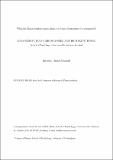What do Diana monkeys know about the focus of attention of a conspecific?
Abstract
Converging experimental and observational evidence suggests that some non-human primates are able to co-orient with shifts in visual attention, both of conspecifics and humans. However, the underlying cognitive mechanisms involved are unclear. To investigate attention-following in Diana monkeys (Cercopithecus diana diana), we used photographs of familiar conspecifics orienting towards one of two locations. A subject monkey was shown a photograph, and shortly afterwards a toy appeared at one location or the other. The toy’s position therefore either matched the location signalled by the head and body orientation of the photographed monkey (compatible), or was opposite to that location (incompatible). Overall, monkeys’ first inspections, total duration of looking, and number of looks were more likely to be directed to the compatible location, i.e. towards the direction of attention shown in the photograph. Furthermore, when a photograph of an adult monkey signalled attention to one location, but the toy appeared at the opposite (incompatible) location, subjects re-inspected the monkey photographs more often than when the toy appeared at the compatible location, suggesting a violation of expectancy. This effect was not the case if the photograph was of an immature animal. Our results show that attention-following was not limited to simple reflexive orienting by the monkeys, and that monkeys perceived a relationship existing between agent and object of attention.
Citation
Animal Behaviour 68(6): 1239-1247 December 2004
ISSN
00033472Type
Journal article
Collections
Items in the St Andrews Research Repository are protected by copyright, with all rights reserved, unless otherwise indicated.

